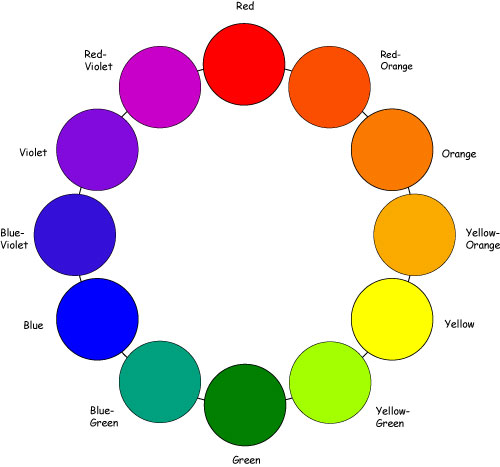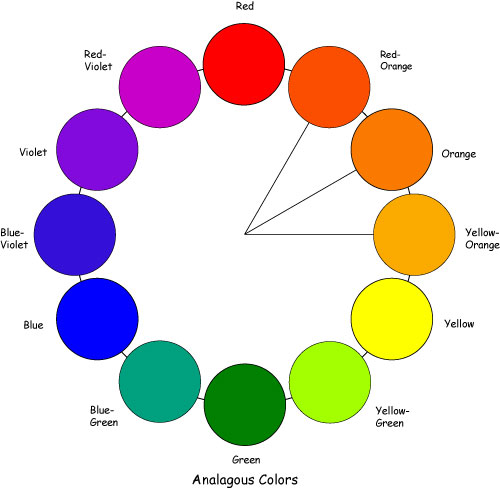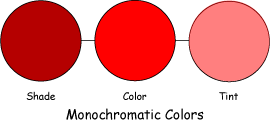WATERCOLOR PAINT AND COLORS

Watercolor Techniques
|
Many brands of professional quality paints are available, but different paint brands with the same color name may be slightly different. Spend time experimenting with different brands and mixing basic colors together to form new ones.
Color Wheel Colors
A color wheel helps arrange color relationships for the artist. Red, yellow, and blue are the primary colors on the color wheel. Mixing together two of these three colors forms the secondary colors of orange, green, and violet. Red and yellow make orange, blue and yellow make green, and blue and red make violet. The tertiary colors of red-orange, yellow-orange, red-violet, blue-violet, yellow-green, and blue-green come between the other colors on the color wheel.

Complementary colors are opposite each other on the color wheel. Red is opposite to green, blue is opposite to orange, and yellow is opposite to violet.

Analogous colors are several colors that are next to each other on the color wheel. Red-orange, orange, and yellow-orange are analogous and are closely related colors.

Color Temperature
Paint colors may be warm or cool, and these colors can affect the atmosphere of a painting. For example, cadmium yellow medium is warm, while lemon yellow is cool. Cadmium red medium is warm, whereas alizarin crimson is cool. Ultramarine blue is warm; phthalo blue is cool. Red added to a color warms it up; blue cools it off. Colors are more intense when warm colors are mixed together; more subtle colors result when cool colors are mixed together.Balance warm and cool—and dark and light—colors in a painting. Cool colors fade into the distance; warm colors come forward. Try to always have some warm colors for visual attraction. Emphasize one color by de-emphasizing another.
Color Properties
The hue is the color name. Each of the hues produces a range of intensities and values. Tints are lighter colors; shades are darker colors. Tones are dulled colors and are made by mixing opposite color wheel colors. Tube paints will produce intense, saturated colors with a minimum of water. More water is added to mix a tint. Black or gray is added to mix a shade. Monochromatic colors consist of one color plus its shades and tints.

Try painting a value chart with about 10 squares. Start with color from the tube in the first square and gradually add water to lighten each successive square. A painting may be painted high or low key—lighter or darker overall values. High key paintings use mostly lighter colors; low key paintings use mostly darker colors.
Paint the lightest light color next to the darkest dark color, or use an intense color for a captivating focal point in a painting. To make an object recede, lighten the color. Darken the color to bring an object forward. Paint color, value, and intensity also enable the artist to portray morning, noon, or evening light and shadows, and show different weather conditions. Try using at least five value colors in a painting, contrasting light and dark. Use negative painting—painting dark colors next to or around lighter ones—to make an object stand out.

Transparency and Staining of Watercolor Paints
Watercolor paints are transparent, semi-transparent, semi-opaque, or opaque. Light passes through transparent paint. It can be successfully layered or used for glazing. Opaque paint is more condensed, will not let light through, and may often include white paint. Paint manufacturers usually state which paint colors are transparent, opaque, or somewhere in between.Some paint colors stain or granulate more than others. Those that stain are harder to lift from paper, but they help to produce interesting paintings.
Paint Palette Setup
A covered palette will protect watercolor paints. Colors can be arranged by color family or with warm and cool colors separated. Some artists avoid painting dead colors by leaving black off their palettes, preferring to make interesting "blacks" by mixing colors such as ultramarine blue and burnt sienna. As a general rule, turn your palette so that the colors you are using most frequently are closest to the hand you paint with.Watercolor Paint Resources
